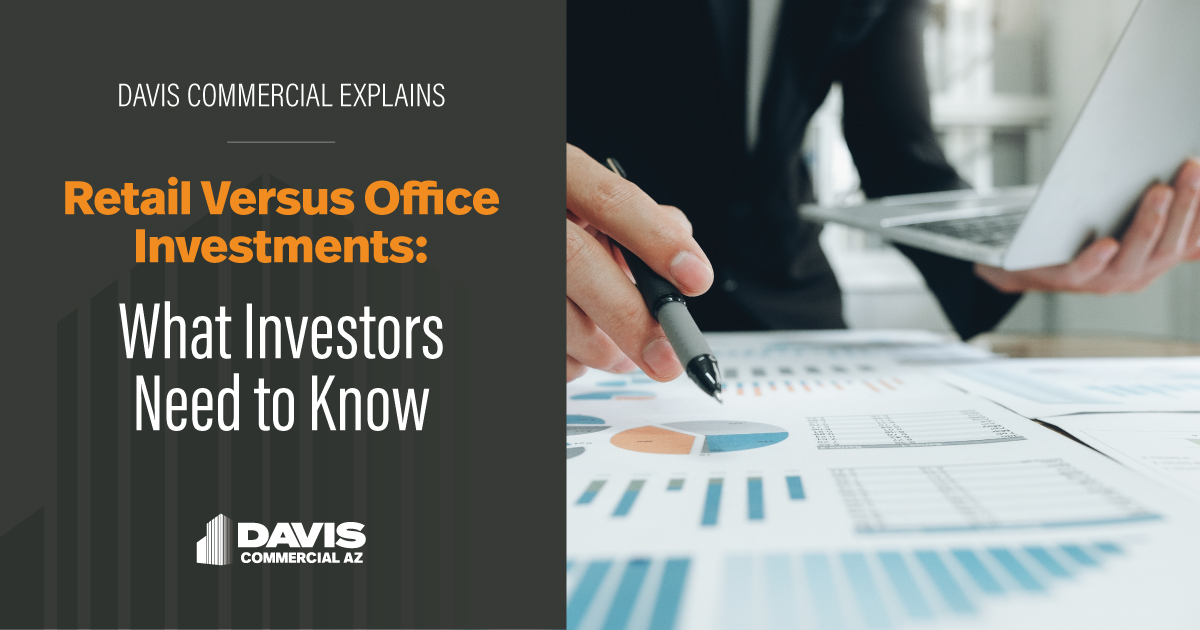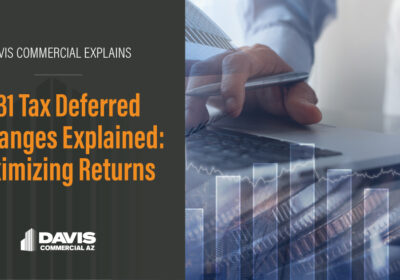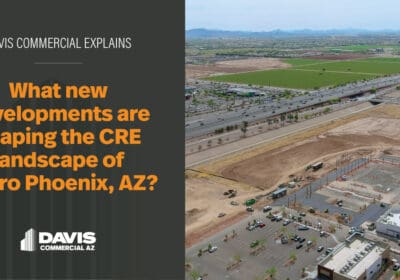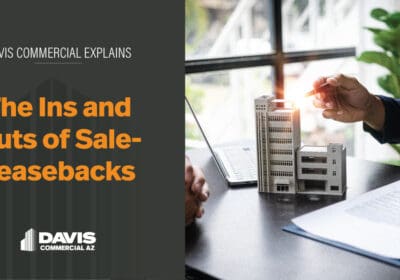Retail Versus Office Investments: What Investors Need to Know

Not all commercial real estate properties are created equal. Whether you’re eyeing a retail center or an office building, the differences go beyond bricks and mortar. From tenant turnover and lease types to location priorities and renovation costs, each property type comes with its own set of risks and opportunities. Understanding these distinctions in Arizona’s unique market can be the difference between a smooth, predictable investment (also referred to as a ‘coupon clipper’) and one that demands constant attention (often offers an ‘add value’ component to the investment). This blog breaks down the critical factors investors need to weigh when choosing between office and retail investment properties.
Turnover and Stability
Tenant turnover is a key factor in an investment’s predictability and workload. Although office space is costly to re-tenant, office tenants can provide greater stability with the potential for lease renewals and a tenant remaining in a single space longer. Office leases in Arizona are typically between three to five years. However, when a tenant requires a new buildout, landlords will require a seven- to ten-year lease to make the economics pencil. This helps the landlord with lower turnover, which equals lower vacancy risk, as well as time and costs associated with preparing and marketing the property. For these reasons, office investments appeal to many commercial investors.
Retail spaces benefit from constant exposure to customers, creating a built-in marketing effect for the property. The average retail lease in Arizona varies based on landlord and tenant objectives. Ironically, retail tenants may turnover more frequently due to customer-driven demand, but retail space is generally less expensive to re-tenant than office space. Fortunately, high foot traffic can generate interest from potential future tenants, helping minimize vacancy periods when a retail space becomes available.
Lease Structures
Lease length isn’t the only difference between office and retail agreements. Some lease structures offer higher returns but risk a more unstable rate. Others provide stability with potentially lower returns. Regardless of the lease structure, the tenant pays a base rent and all expenses related to the property. The most common leases include:
- Full-Service Gross Lease: A single, all-inclusive payment covering rent, utilities and all property expenses, including triple net costs. The tenant pays for
- Modified Gross Lease: Base rent, which includes common area maintenance plus certain tenant responsibilities like utilities or janitorial services.
- Triple Net Lease (NNN): The tenant pays base rent, utilities, property taxes, insurance and building maintenance or repairs. This is common for anchor tenants or single-tenant retail properties. Triple net leases vary from region to region, so read the tenant lease closing to determine what is included in nets.
- A variation of the NNN lease is the Percentage Lease: The tenant pays a fixed base rent plus a percentage of their sales. This lets the landlord share in the tenant’s success, so rent increases if the business does well and stays lower if sales are slow.
Retail spaces typically lean more toward triple net, with or without percentage rent. Office leases can be full-service gross, modified gross leases or triple net, based on the building design and type (multi or single tenant).
Location and Visibility
Location drives performance for both property types, but the priorities differ. Retail properties thrive on visibility and accessibility, often in high-traffic shopping centers, mixed-use developments or standalone sites. Vehicles per day, foot traffic, signage and proximity to complementary businesses directly influence rent potential and overall property value.
Office spaces prioritize accessibility for staff, ample parking and a professional setting that encourages collaboration and productivity. Proximity to highways, transit and other businesses enhances the building’s appeal and credibility. While street visibility is less critical, the right location supports long-term tenant retention, contributing to stable, consistent returns.
Expenses
Both property types involve shared expenses for common areas, but the components can differ. Retail CAM (common area maintenance) fees often cover parking lots, landscaping, lighting and property management across the shopping center. Office CAM fees typically include all of the exterior and interior maintenance, which includes janitorial services, security, lobby, elevator, restroom and stairwell maintenance, and HVAC repairs. Office budgets tend to be more consistent month to month. Understanding these differences in net operating income and overall property performance is critical when evaluating the asset.
Tenant Improvements and Adaptability
Retail spaces often require customized buildouts to fit a brand’s operational needs, which can mean higher upfront costs for tenant improvements. Landlords contribute minimal to most retail tenant improvements because when the tenant vacates, the buildout has little if any value to the new occupant.
Office spaces usually have standardized layouts. As a result, landlords invest more into a new office tenant’s buildout then a retail space. While tenant improvements are still common for office properties, it’s important to remember that everything is negotiable. When evaluating a long-term commercial investment, weigh the cost of re-tenanting vacant suites.
Market Trends and Flexibility
Evolving work habits and consumer behavior are shaping the performance of both property types. Office spaces with adaptable layouts, shared amenities and modern infrastructure can attract longer-term tenants and sustain value in a changing market as we continue to see a shift away from work-from-home models. Meanwhile, retail properties that accommodate hybrid business models, smaller footprints or experience-focused layouts can capture higher foot traffic and stay competitive in such an online world.
If you’re looking to invest in a commercial real estate property, reach out to our experienced team at Davis Commercial AZ. Our team strategically aligns commercial investments with your goals — delivering opportunities that meet your needs today and build value for the future. We provide the insights and analysis necessary to make confident, strategic decisions that meet your financial goals.
Related Posts

1031 Tax Deferred Exchanges Explained: Maximizing Returns
As businesses grow and operations evolve, so do their property needs. The need for new…

What new developments are shaping the CRE landscape of Metro Phoenix, AZ?
Metro Phoenix consists of more than 20 municipalities and continues to rank among the fastest-growing…

10 CRE Maintenance Tips to Protect and Enhance Asset Value
Protecting the value of a property in commercial real estate (CRE) is crucial, especially for…

The Ins and Outs of Sale-Leasebacks
Sale-leasebacks are a common practice in the world of commercial real estate. They are a…
